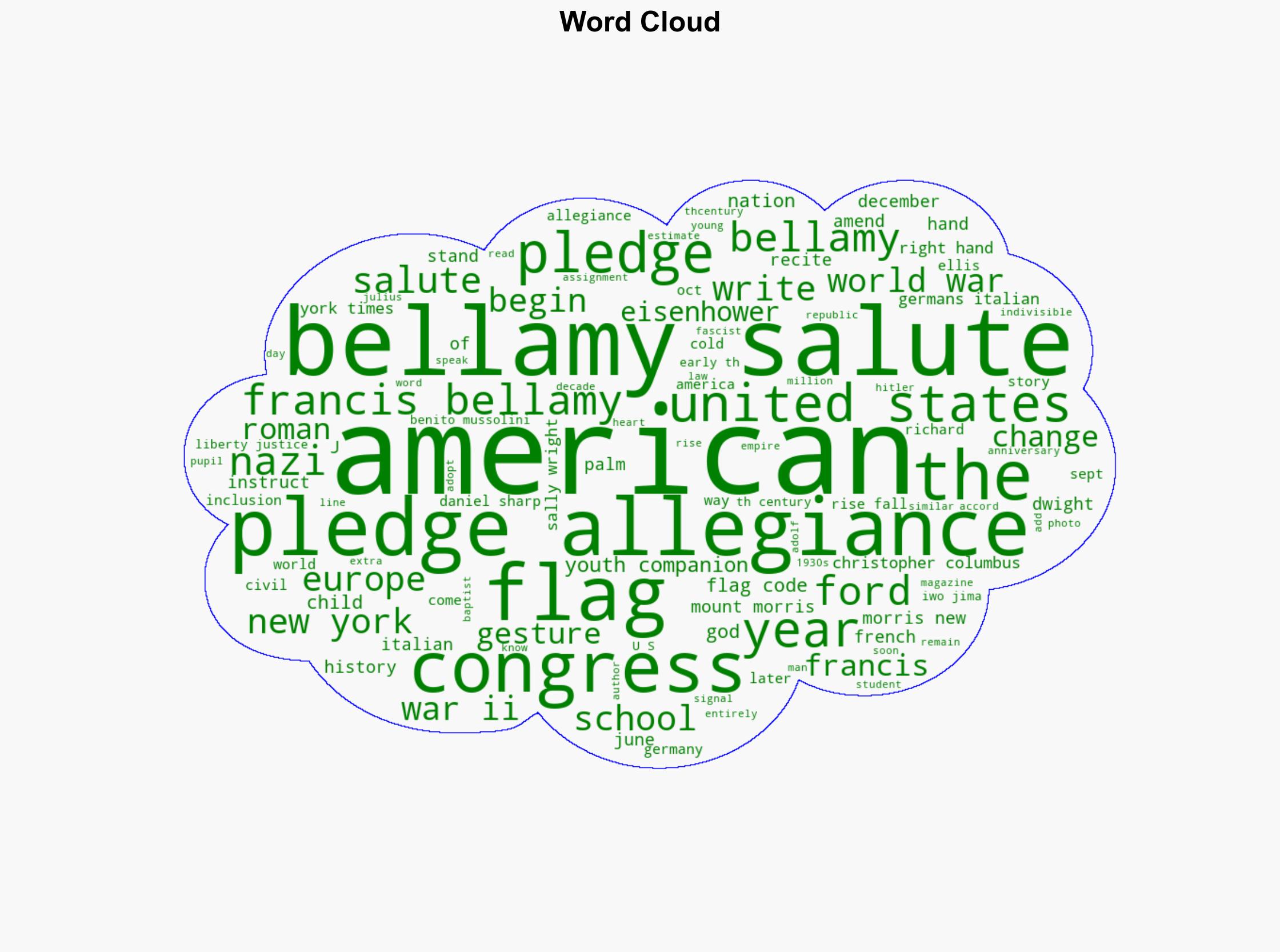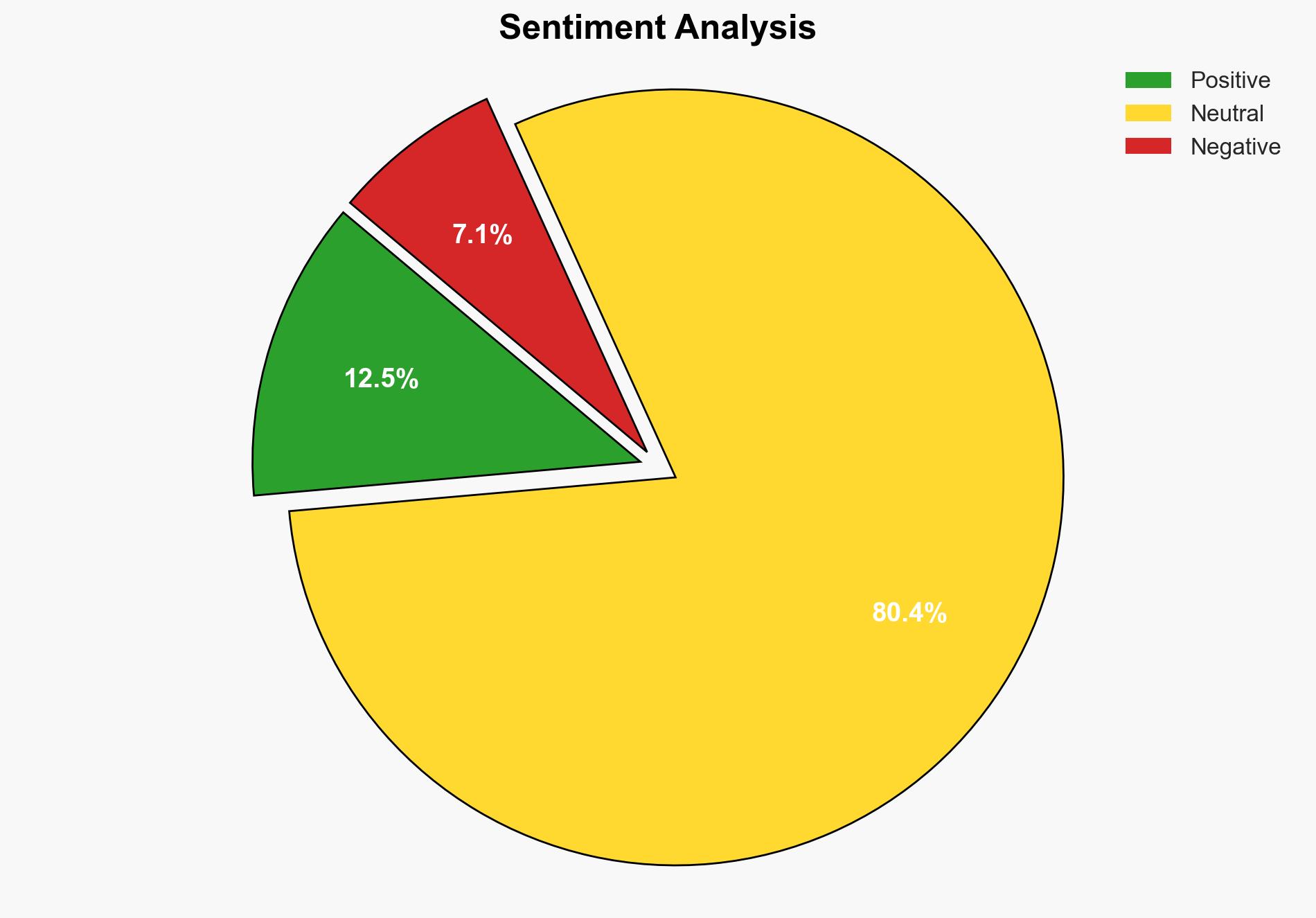The Rise And Fall Of The Bellamy Salute The Nazi-Like Gesture That Americans Once Used To Pledge Allegiance To The Flag – Allthatsinteresting.com
Published on: 2025-11-16
AI-powered OSINT brief from verified open sources. Automated NLP signal extraction with human verification. See our Methodology and Why WorldWideWatchers.
Intelligence Report:
1. BLUF (Bottom Line Up Front)
The strategic judgment is that the Bellamy Salute was discontinued primarily due to its visual similarity to the Nazi salute, which posed a reputational risk to the United States during a time of rising fascism in Europe. This hypothesis is supported by historical actions taken by Congress to amend the flag code. Confidence level: High. Recommended action includes continued vigilance in monitoring symbols and gestures that may be co-opted by extremist groups to prevent reputational damage and ideological infiltration.
2. Competing Hypotheses
Hypothesis 1: The Bellamy Salute was discontinued due to its resemblance to the Nazi salute, which became politically untenable as the U.S. sought to distance itself from fascist regimes.
Hypothesis 2: The change was primarily driven by a broader cultural shift towards more inclusive and less militaristic expressions of patriotism, independent of external influences.
Hypothesis 1 is more likely due to the timing of the congressional amendment, which coincided with World War II and the rise of fascism, suggesting a direct response to international optics and domestic sentiment.
3. Key Assumptions and Red Flags
Assumptions include the belief that public perception and international relations significantly influence domestic policy changes. A red flag is the potential for historical revisionism, where the narrative might be simplified to align with current political ideologies. No significant deception indicators are present, but the reliance on historical accounts requires scrutiny for bias.
4. Implications and Strategic Risks
The primary risk is the potential for extremist groups to adopt historical symbols for propaganda, which could lead to domestic unrest or reputational damage. Escalation scenarios include political polarization and informational warfare, where symbols are weaponized to create division.
5. Recommendations and Outlook
- Monitor extremist groups for the adoption of historical symbols and gestures.
- Educate the public on the historical context of national symbols to prevent misuse.
- Best-case scenario: Symbols are preserved in their historical context without being co-opted.
- Worst-case scenario: Symbols are widely adopted by extremist groups, leading to societal division.
- Most-likely scenario: Continued vigilance and education mitigate the risk of misuse.
6. Key Individuals and Entities
Francis Bellamy – Author of the Pledge of Allegiance.
Daniel Sharp Ford – Publisher who commissioned the pledge.
U.S. Congress – Legislative body that amended the flag code.
7. Thematic Tags
Structured Analytic Techniques Applied
- Cognitive Bias Stress Test: Expose and correct potential biases in assessments through red-teaming and structured challenge.
- Bayesian Scenario Modeling: Use probabilistic forecasting for conflict trajectories or escalation likelihood.
- Network Influence Mapping: Map relationships between state and non-state actors for impact estimation.
Explore more:
National Security Threats Briefs ·
Daily Summary ·
Support us
·





